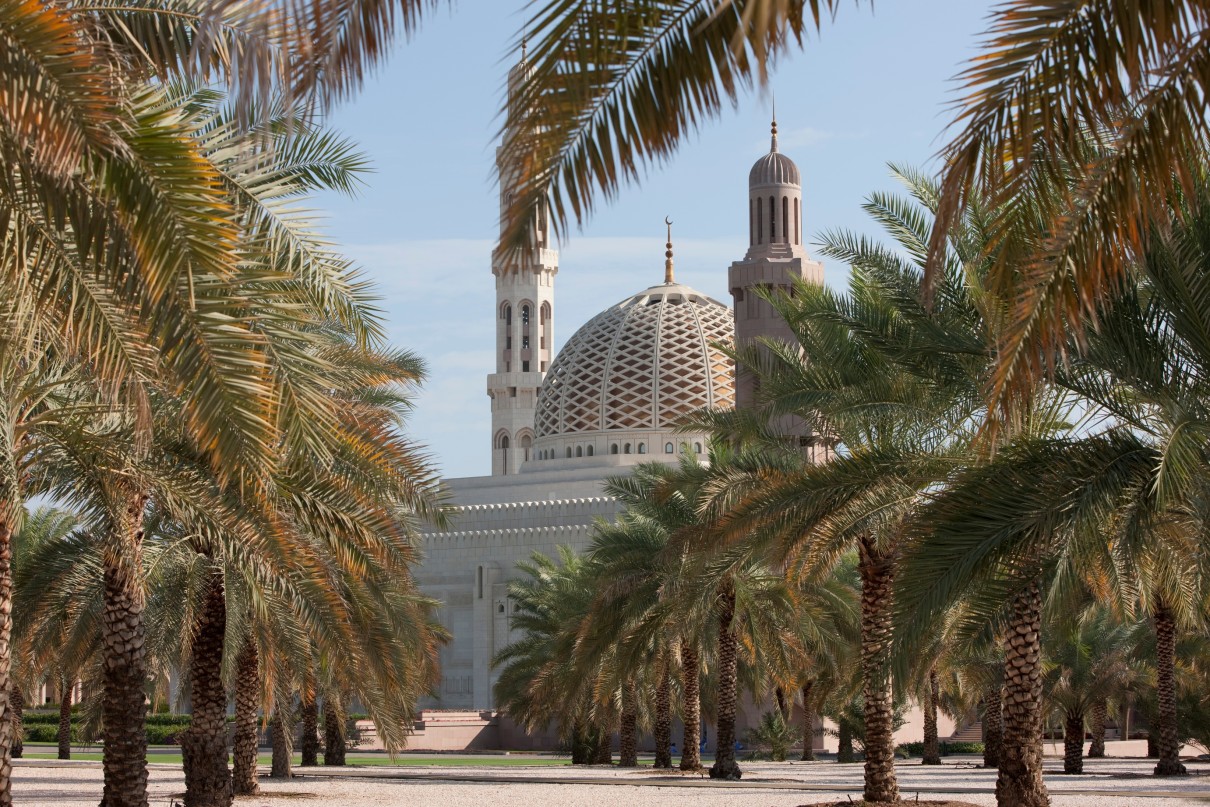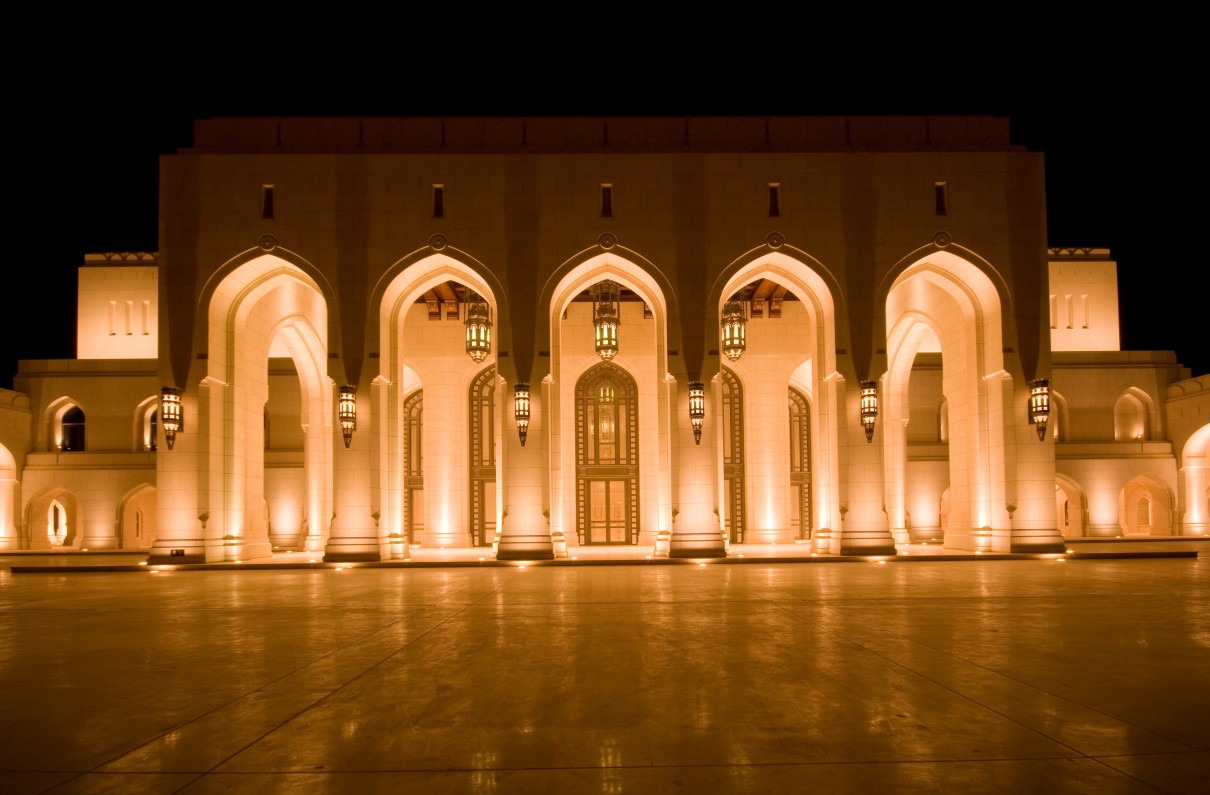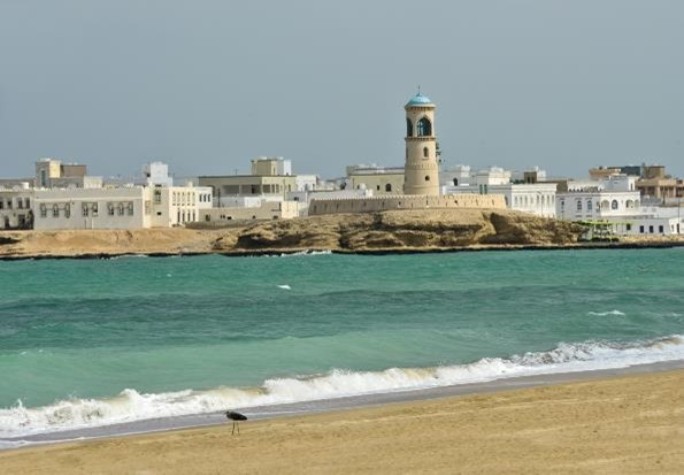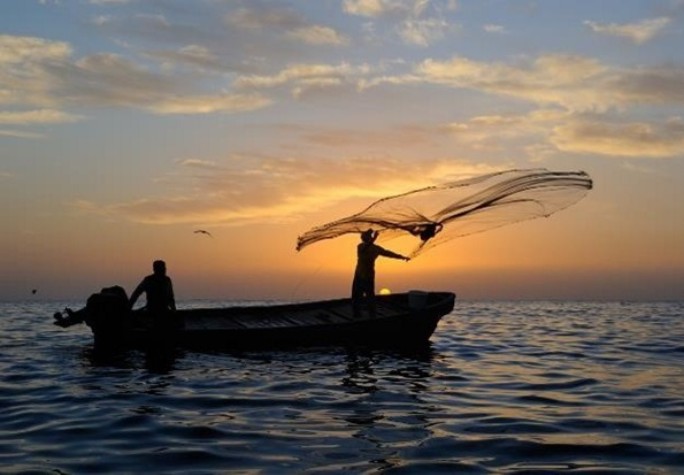Page content
Oman: Highlights in and around the capital Muscat
Muscat, once the size of its tiny historical old town (three square kilometres), today stretches along the coast for over 65 kilometres. It is divided into two historical precincts: Old Muscat, surrounded by thick town walls and where foreigners were once barred entry, is home to museums and the fortresses of Al Mirani and Al Jalali. One of its main attractions is the Al Alam Palace of the Sultan. In a nearby bay lies Muttrah Port with its three-kilometre coastal road, the perfect backdrop to spectacular eighteenth-century villas! The modern part of Muscat with its commercial hub Ruwi and many shopping centres is characterised by white low-rise buildings and is divided into various districts. The capital is also an ideal base for trips to the valleys and nearby fortresses, Nizwa for example, or along the north coast to Sohar, or the south coast towards Sur and the dunes at Sharqiya Sands.
Sultan Qaboos Grand Mosque
Inaugurated in 2001 to mark the thirtieth anniversary of the reign of the late Sultan, and privately financed by him, the Grand Mosque in Oman lies in Bawshar, Muscat. Both Muslims and non-Muslims may visit the impressively large building with its elaborate interior. It boasts three naves, five minarets, several washrooms and three arched entrances. The prayer room for men under the towering central dome features impressive wall designs, Carrara marble pillars, stained glass and tiles in the Persian style. A 14-metre tall Swarovski chandelier weighing eight tons hangs 50 metres above the floor and illuminates the room with a thousand lights. Weighing 21 tons, the hand-woven Persian carpet below is the second-largest in the world.
Royal Opera House Muscat
A lover of classical music and art, in 2001, the late Sultan Qaboos commissioned the construction of the magnificent opera house in the Al-Qurm district in the middle of the capital. It was inaugurated in 2011. The building is considered an extraordinary architectural achievement, combining traditional and modern elements. The annual concert programme features a selection of the best classical music works by composers from the Orient and around the world.
Muttrah souq
In the district of Muttrah lies the capital’s commercial hub. The beach promenade with its eighteenth-century villas is worth a visit, along with the small fishing harbour and the largest souk on the Arabian Peninsula. This is where one can find traditional clothes, handicrafts, antique jewellery and Bedouin carpets as well as manufacturersand can watch the khanjar, the traditional Omani dagger, being made.
A trip to Nizwa
The ancient capital of Oman lies in a large oasis, at the crossroads of northbound and southbound caravan routes. Nizwa is a lively trading hub, with a long history and tradition, where even today sheikhs determine the rural region‘s fortunes. The large fortress, now a museum, the local souk and the Friday morning cattle market make the most important town in this mountain region a must for travellers. En route lies the picturesque village of Birkat Al-Mawz, a great place to make a stop.
Discover Sur
Historically a centre of trading and shipbuilding, Sur is the most important city southeast of Muscat and still resembles Omani villages of the past. Shipyards which employ ancient methods for building dhows still exist here. Sur is a lively place in the mornings and evenings and is home to a fortress and shipping museum. The fish and vegetable market and the souk in the city centre are also a must for visitors.
For a few rials, visitors can take a boat ride with local fishermen to watch the harbour’s hustle and bustle before alighting in the Al Ayjah district, where whitewashed houses line the narrow streets. At midday, when the calls to prayer ring out, the watchtower is the best place to hear the muezzins’ calling in the local mosques. A visit to Sur can be ideally combined with trips to explore Wadi Tiwi and Wadi Shab, plus a stopover on the beach at Fins.
A trip to Jabal Akhdar, the “Green Mountain”
The 3,020-metre high “Green Mountain” lies in the highest part of the central Hajar mountain range. It separates the “belly“ of the Al Batinah coastal plain from the “spine“ of the A'Dhahirah plateau in the interior. Numerous villages are dotted around the hills, such as Seiq Al-Sherija, Wadi Beni Habib, Al Ain, Al Aqer, Al Manakher, Hil Al Yaman and Al Qasha. One particular highlight are the rose and fruit orchards (pomegranates, peaches, apricots, almonds among other fruit) on the Saiq Plateau. April is the time to harvest the rose petals, from which precious oil is extracted to make perfume and confectionery, for example.
Oman Air, the Sultanate’s national airline carrier, operates five weekly direct flights from Munich to the capital Muscat and daily flights from Frankfurt/Main. Other flight connections are available with various other airlines. www.omanair.com
For additional information on the Official Host Country of ITB Berlin 2024: www.experienceoman.om






